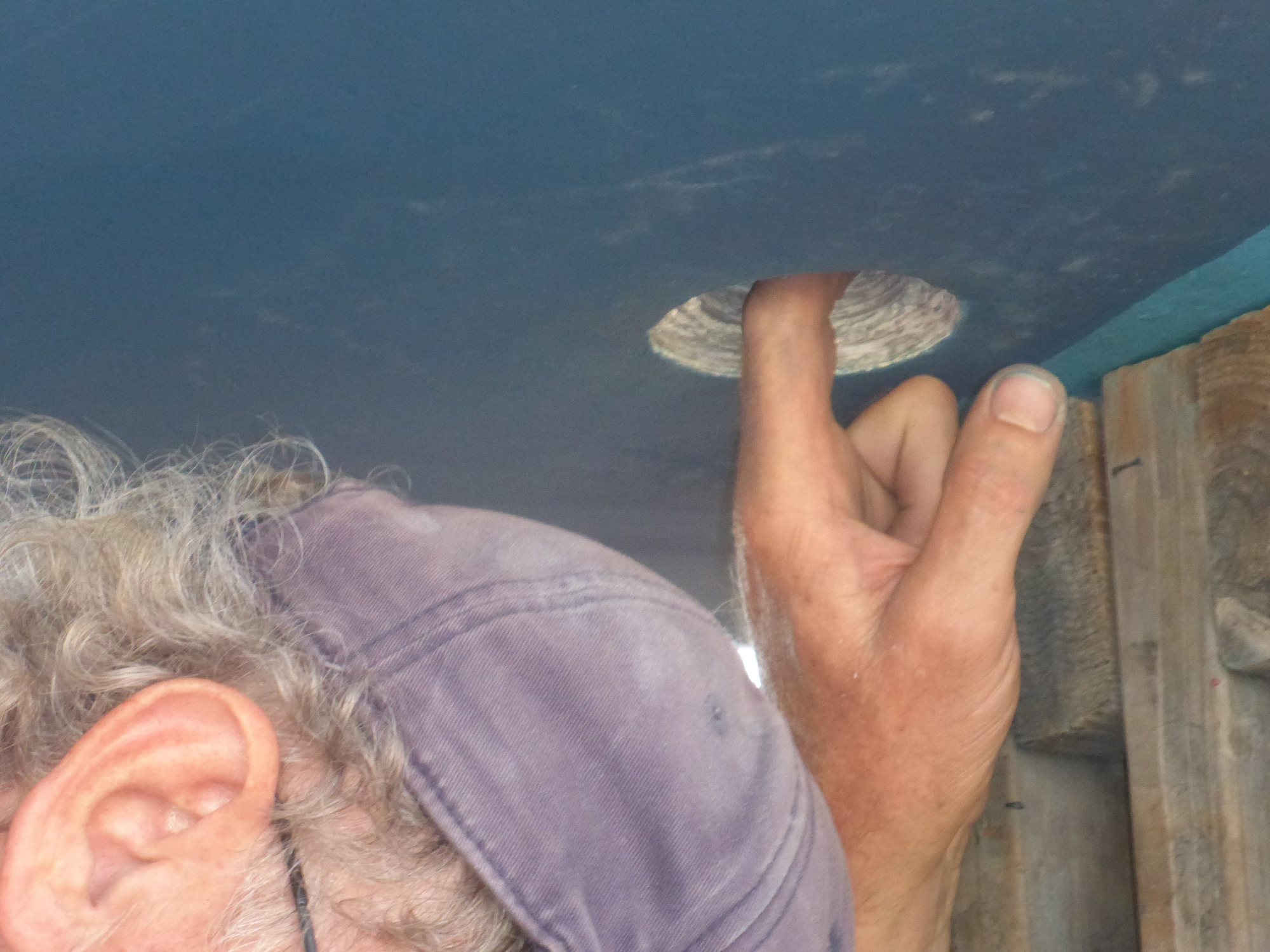“There’s some holes in our boat, dear Leticia, dear Leticia. There’s some holes in our boat dear Leticia some holes”
“Then fix them dear Harry, dear Harry dear Harry. Then fix them dear Harry so that Flapdoodle will float.”
This is the “whole” story on the present status of the “holes” in Flapdoodle. So as you would understand holes in a boat under the water line are of some concern. In actual fact there has to be holes in a boat in order for certain functions to occur including:
- a raw water intake for the engine in order to keep it cool
- water to circulate for the refrigeration system
- pump out holes for the sewerage system [ FYI If off shore more than only 3 miles it is permissible to dump wastes directly overboard into the deep blue sea, however to date we have never released waste this way.]
- a hole for the galley sink drain
- an inlet water through hull for the de-salination unit [also known as the water maker]
- a hole where the propeller shaft exits the boat hull
- a hole for the transducer for the depth finder
These holes are best to be as few in number as is absolutely necessary and are fitted with through hulls to which a seacock is attached so that the hole can be opened and shut off as required. When we purchased Flapdoodle she had eleven through hulls below the water line. This haul out has been an excellent time to rethink the hole/whole situation, and reduce it to nine.
Harry removed all of our existing through hulls and seacocks.
The boatyard workers filled in four of the holes that were no longer needed and created two new ones in appropriate places for our water maker and for a newly positioned engine raw water inlet. So mathematically speaking 11 – 4 + 2 = 9
Fiber glass rings were inserted into the holes and these were held in place with layers of fiber glass sheets and epoxy on the inside and outside of the hull. When dry, these were sanded. Before they were painted they were see-through, but formed a very strong patch.
The new through hulls were inserted and fastened in place using 3M 4200 sealant and fiber glass backing plates. The sea cocks were screwed on.
Harry’s job was then to re-attach all of the hoses to the seacocks in order to have the engine, refrigerator, galley sink, and heads [toilets] in working operation again.
With the whole hole project complete we can sleep soundly knowing that all nine holes can be closed off with the new functioning seacocks when need be and turned on to allow water to enter via new hoses with new clamps where it is required. Another important project to keep us safe has been completed.
OR we can party on the hard knowing we will return to a floating boat.

















Great story, Dear Leticia! I shall be singing that song for the rest of the day. Although when I recall this song in the future I will know that your boat’s holes are in order.
That is a big project done. Great series of photos. Oh the party photos are great. You guys are having way too much fun.😀😀
Hang on. Isn’t 3M’s 4200 water soluble? Or is it the 4201 that is water soluble. Not to worry, just keep dancing.
You got that song stuck in my head!
Looks like a good time as usual
<3<3